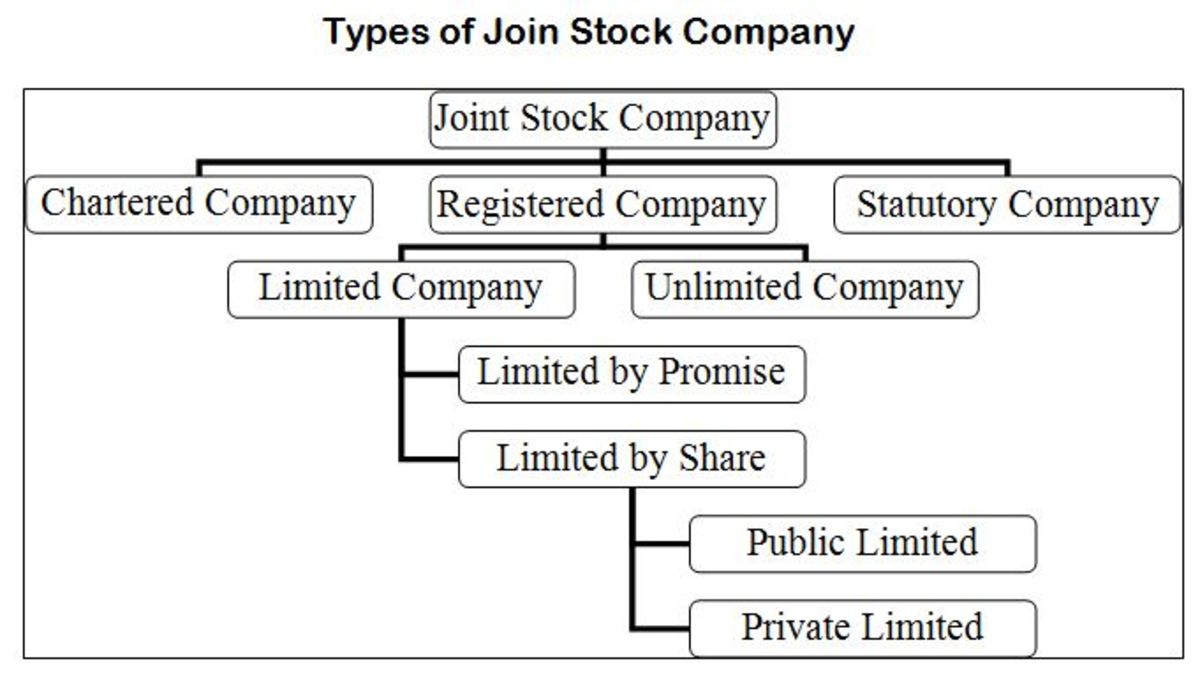Single Member Company:A critical Analysis of

What is Single Member Company?
A Single Member Company is therefore no different from any other private limited company other than the fact that the entire issued share capital is held or owned by one single/sole person i.e. the single member hence, the designation "single member company". This sole person is the sole beneficial owner of the company and is the company's only member/shareholder i.e. the single member. A Single Member company requires that a minimum of two persons are still in place to act as company directors - member refers to shareholder and not to director. There are some specific requirements with regard to the drafting of the memorandum & articles for a Single Member company.
A single member company can be defined as a company with only one member, also referred to as the shareholder. A company may be formed as a single member company or may become a single member company following a share transfer whereby the number of shareholders is reduced to one. This one shareholder will hold all of the shares of the company in their name. The sole member subscribes to the company by signing the memorandum and articles of association and submitting the original signed document to the Companies Registration Office.
A private company, limited by shares or by guarantee, formed with one member or one whose membership is reduced to just one Single Member Company as is evident from the name is the type of the company with only one single director. In this company there is a single director that owns 100 percent shares of the company. However in single member company it is compulsory to appoint company secretary and similarly the director also has to nominate one person who will be the owner of the company in the event of death of that single member. All the procedures and regulations of the law apply to the single member company in the same manner as they apply to the private limited company. A single member – present in person or by proxy – constitutes a quorum, in such circumstances.
If, sole member, takes a decision, except by written resolution of the company, must give a written record of the decision to the company. This ensures continuity of records, in the case of the sale of some or all of interest in the company. If the company enters into an unwritten contract with the sole member who is also a director of the company, and the contract is not in the ordinary course of the company's business, the company must ensure that the terms of the contract are set out in a memorandum or are recorded in the minutes of the next director's meeting.A company's register of members must accurately record its members. The register of members of a single-member company must contain an express statement to the effect that the company has only one member and state the date upon which the company became a single member company.If the membership decreases to one, the register must contain an express statement to the effect that the company has only one member and state the date upon which the business became a single-member company.
Private Limited Company Vs. Single Member Company
1. A company registered as Private Limited Company cannot invite subscriptions from general public.
1. This condition is same for the company registered as Single Member Company.
2. Transfer of shares is prohibited in the company registered as private limited company.
2. Transfer of share is also prohibited in the company registered as single member company and can only be done through the will of the only single member or as per the requirements of inheritance law.
3. In case of company registered as private limited company nominations of the members of the company is only filed with the company.
3. In case of company registered as single member company nomination of nominee director is filed with the company and thereafter company notifies the registrar of the companies by filing form S1.
4. A company registered as Private Limited Company should have at least 2 members.
4. A company registered as single member company should have only 1 member.
5. In case of company registered as Private Limited company maximum number of members are limited to 50. However the employee members are not counted for the purpose of deciding upper limit and joint shareholders are counted as one.
5. In case of company registered as single member company only one member is the maximum and minimum limit.
6. In case of company registered as Private Limited company certificate to commence business from Registrar is not required.
6. In case of company registered as single member company there is no requirement to obtain certificate to commence business.
7. In case of company registered as private limited company there is no requirement to obtain minimum subscription
7. In case of company registered as single member company there is no requirement to obtain minimum subscription.
8. For a company registered as private limited company there is no requirement of filing of prospectus except when a private limited company is converted into public limited company.
8. In case of company registered as single member company prospectus is also not required.
9. Filing of accounts with Securities and Exchange Commission of Pakistan is not mandatory in case of company registered as private limited company except when the capital of the company is Rs. 7.5 Million.
9. Filing of accounts is also not mandatory for company registered as single member company.
10. In case of company registered as Private Limited company qualification of auditor is not prescribed except when the capital of the company is Rs. 3 Million or more appointment of Chartered Accountant as auditor is mandatory.
10. In case of company registered as single member company the conditions for appointment of auditors is similar to that of company registered as private limited company.
11. There is no restriction for investment in associated companies and associated undertaking in case of company registered as private limited company.
11. Same conditions apply for company registered as single member company as are applicable to companies registered as private limited company.
12. For company registered as Private Limited company there is no restriction on the business of chief executive of the company. The chief executive of the company can undertake any type of business he wishes to desire.
12. The conditions for the business of chief executive for single member company are similar to that of the company registered as private limited company.
13. Company registered as private limited company there is no requirement for reporting beneficial ownership.
13. For company registered as single member company the conditions are similar as mentioned on the right for company registered as private limited company.
14. There is no requirement for companies registered as private limited company to hold statutory meeting.
14. Company registered as single member company is also not required to hold statutory meeting.
15. Private limited company is also not required to file statutory report.
15. Company registered as single member company is also not required to file statutory meeting.
16. Appointment of company secretary is not mandatory for company registered as private limited company.
16. For company registered as single member company appoint of company secretary is mandatory.
17. In case of company registered as private limited company quorum of the meeting is minimum 2 members present is person having not less than 25% of the voting power on their account or through proxies.
17. In case of company registered as single member company only a single member present personally or through proxy constitute the quorum.
18. In case the company registered as private limited company if number of members is reduced from 2 to 1 it has to convert itself into single member company.
18. Similarly in case of company registered as single member company if the number of member is increased from 1 it has to convert its self into private limited company. An LLC enjoys the limited liability of a corporation, and the potential tax benefits of a disregarded entity. State law regulates LLCs and determines whether single-member LLCs are allowed. Single-member LLCs may enjoy tax benefits, and they offer owners a great deal of control. On the other hand, the informality of an LLC may create difficulties when establishing credit. A single-member LLC has the choice to be taxed as a sole proprietorship or corporation.
Advantages of Single Member Company
The advantages of a single member company are primarily the same as those of a private limited company incorporated under the Companies Acts and include:
- Limited liability protection for the members; as the company is a separate legal entity, the finances of the company are separate to those of the owners. Like all LLC’s, a single-member LLC is designed to protect against personal liability. Accordingly, it should arguably be treated as a separate “person” for legal purposes, and thus the sole member/equity holder should be shielded from any liabilities of the LLC, including debts and lawsuits.
- The existence of the company does not cease on the death of a member or director. LLCs are enduring legal business entities, with lives that extend beyond the illness or even death of their owners, thus avoiding problematic business termination or sole proprietor death.
- There may be additional tax benefits to setting up a limited company; limited companies are subject to lower corporation tax; and
- Specific to a single member company, the sole member can dispense with holding general meetings, including the Annual General Meeting. Where the decision is made to dispense with the Annual General Meeting, the accounts and reports that would usually be laid before the Annual General Meeting in accordance with the must instead be forwarded to the sole member
-
Even in some countries, a single-member LLC will be treated as a “disregarded entity” for federal income tax purposes (unless it formally elects to be treated as a corporation), and thus its profit or loss will be reported on an individual member’s Schedule C as if it were a sole proprietorship. This will save the member time and money in connection with the preparation of income tax returns, since the separate LLC entity need not file returns.
No loss of power to a board of directors (although an operating agreement may provide for centralization of management power in a board or similar body).
Membership interests of LLCs can be assigned, and the economic benefits of those interests can be separated and assigned, providing the assignee with the economic benefits of distributions of profits/losses (like a partnership), without transferring the title to the membership interest.
There is no chance of disputes which are common in private companies, as a member would not be having any associate in the company.
Disputes among the heirs will not have any negative impact on the business or legacy of the company.
There are no restrictions on the business of a single-member company. All the individuals having their own business in the form of trade, industry, agriculture, advisory role or any other provisions can form a company and can benefit from the new concept.
Do you prefer Single Member Company over Private Limited Company?
Single Member Company Vs. Sole Proprietorship
Before you start a new business, you must decide the tax entity of your company. While a sole proprietorship is the simplest and least expensive way to start a business, you may be better off filing to be a sole LLC. The LLC provides the advantages of limited personal liability, transferability of ownership and better access to capital over a sole proprietorship.
Limited Liability
A major reason for the design of a limited liability company was to reduce the personal risk of running a business. When you run your business as a sole proprietorship, you are personally liable for your business losses. Creditors are able to make claims against the personal assets of the owner of a sole proprietorship. The business losses of a sole LLC are limited to the assets of the business. Creditors cannot make claims against the personal assets of the owner of the LLC. If the LLC is sued, goes bankrupt, or cannot pay its debts, the members' personal funds are not at risk.
Tax Advantages
Despite being treated as separate with regard to liability, a single-member LLC's profits or losses can still be reported on individual income tax filing. This is similar to a sole proprietorship, and it makes tax reporting much simpler. Along with easing reporting requirements, may also save on tax preparation costs.
Control
Like a sole proprietor, the member of a single-member LLC has complete control over how the business is operated. The member may make all business decisions independently and receive the full share of distributed profits. A single-member LLC does not have to deal with shareholders or a board of directors as a corporation would be required to do.
Increased Paperwork
One downside of an LLC over a sole proprietorship is increased paperwork and maintenance
Formality
Compared to the simple business set-up of a sole proprietorship for an individual, an LLC has more formal legal requirements. There is filing of an LLC application, which includes payment of legal and registration fees. The requirements of separate financial accounts and accounting records also make add to the greater burden of operating LLC.
Transferability of Ownership
A sole proprietorship is created and owned by one person. When he dies, retires or becomes disabled, the sole proprietorship will terminate. If someone wants to continue the business, he/she will refile as a new sole proprietorship. A sole LLC allows for the transfer of ownership of the company. When the original owner leaves the business, he is able to immediately transfer ownership to another person and the business will continue to run.
Raising Capital
A sole proprietorship can only be owned by one person. This can create issues in raising capital as a sole proprietorship is not able to sell shares of the company to new investors. The sole LLC, as a corporation, is able to issue new shares of stock. The business can sell shares to new owners in order to raise funds to grow the business. The sole proprietorship is limited to loans from the bank and to funds contributed by the one owner.










